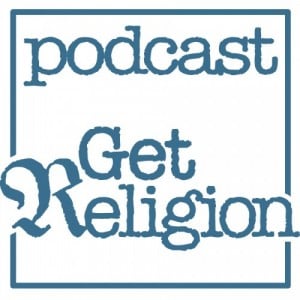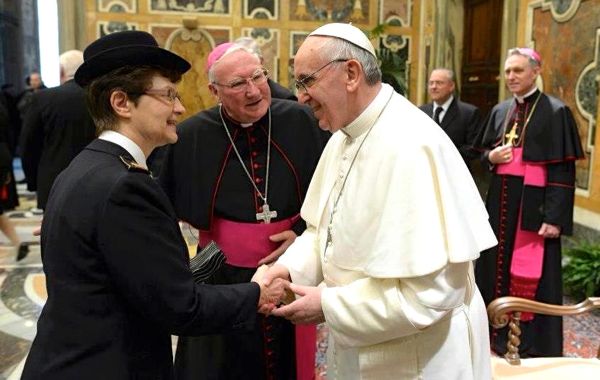As you would imagine, your GetReligionistas are never eager to critique the work of previous members of our team who have found their way back into the world of mainstream religion-news work. However, that professional courtesy doesn’t mean that we can’t point our readers toward stories by our former colleagues that we think everyone needs to read.
Right now, Sarah Pulliam Bailey has a fine report out for Religion News Service that openly explores the doctrinal question that is currently being debated behind closed doors (including most faculty lounges) just about everywhere in the messy postmodern world that is American evangelicalism.
Wait a minute. That’s not quite right. Truth is, progressive evangelicals are debating this question and ordinary, run-of-the-mill evangelicals are debating what to do about the fact that lots of progressive evangelicals are about to make mainstream-news headlines by debating this question out in the open. Did you follow that?
In other words, Sarah has herself an important story here and I would imagine she will keep chasing it. Here’s some material from the top of her report. The key, of course, was the World Vision explosion, before and after it’s decision to reverse its decision to hire Christians openly living in same-sex marriages.
Wait a minute. I forgot to let Sarah state the question:
At its core, the reversal raised a stark question: Can you be an evangelical and support same-sex marriage?
Taking a softer position, a group of progressive Christians wrote in a letter released Wednesday (April 9) that they grieve World Vision’s reversal. “And, we call on Christian institutions to employ LGBT brothers and sisters in Christ who help further the mission of their institutions,” the letter states, acknowledging disagreements on both sides.
“There are committed Christians who believe, honestly, that a few passages in the Bible referencing sexual activity between people of the same gender have been historically misconstrued,” the signers say. “There are also committed Christians who believe, honestly, that homosexuality is sinful and flies in the face of what God desires.”
More than 300 signers include theologian Walter Brueggemann, Dartmouth College historian Randall Balmer, Louisville Seminary theology professor Amy Plantinga Pauw, Yale University emeritus professor Nick Wolterstorff and pastor Brian McLaren.
“I would like the world to know that there are many Christians who support the hiring of gay Christians in Christian institutions,” said Julia Stronks, a political science professor at Whitworth University who organized the letter. Whitworth is an evangelical university based in Spokane, Wash.
Now, there are very few surprising names among the early signers of this letter, which means that large segments of the progressive evangelical world — including academic leaders on many campuses — are still sitting on the sidelines waiting to see what happens. In the months ahead, wise reporters will keep their ears open for whispers (or shouting) on elite campuses in northern zip codes.
Meanwhile, Sarah had no trouble finding people who still think that marriage, and the status of sexual acts outside of traditional marriage, are not core issues in Christian doctrine. For example:
In a blog post for The Gospel Coalition, LifeWay Christian Resources employee Trevin Wax asked: “Can an institution with an historic evangelical identity be divided on an issue as central as marriage and family and still be evangelical?”
(LifeWay is, of course, linked to the Southern Baptist Convention, which is America’s largest non-Catholic flock.)
Ah, but there is the rub in terms of church history. What, precisely, is the doctrinal make-up of this so-called “historic evangelical identity”? What ecclesiastical body has the power to define such a thing for the wider evangelical movement?
The World Vision war hinted that evangelicalism remains a diverse movement defined by the leaders and financial supporters of large parachurch groups that, by their nondenominational nature, struggle to know which issues are essential and which ones are not. Often, there is no there there.
GetReligion readers already know what is coming, right? We are back to this challenge: Define “evangelical” and give three examples.














